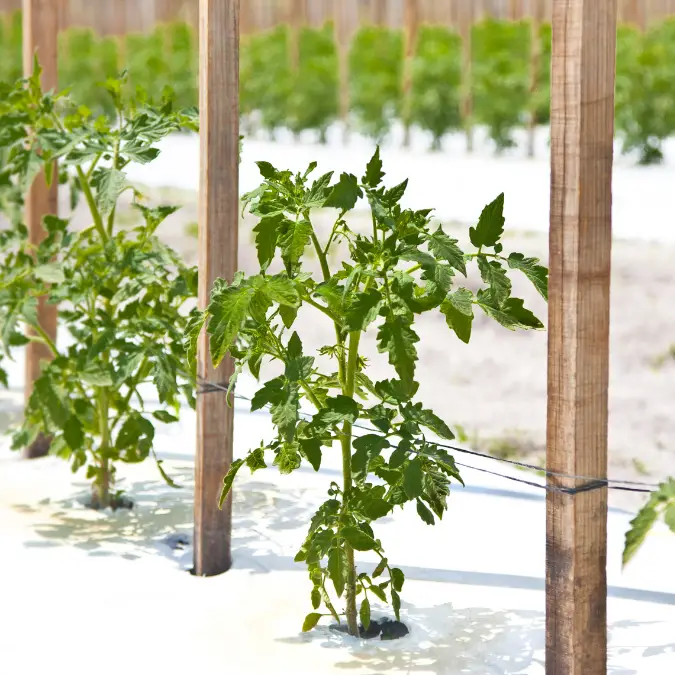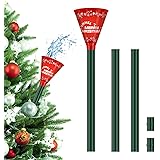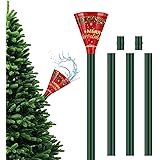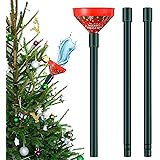Have you ever wanted to grow your own bonsai tomato plants? Have you thought of how to grow bonsai tomato plants? Growing bonsai tomato plants is an easy and fun way to add a unique element to your garden.
In this blog post, we’ll explore growing bonsai tomato plants and provide tips and tricks for the home gardener. From selecting the right variety of tomatoes to pruning and maintaining your plants, this post has everything you need to know to get started.
Location
When deciding on the best location for your bonsai tomato plant, you should consider the amount of sunlight, temperature, and humidity the plant will receive.
For most varieties, bonsai tomatoes prefer full sun (at least 6 hours per day), and temperatures between 70-85 degrees Fahrenheit.
Too much heat can cause problems with the plant’s development and fruiting, and too much cold can damage the roots and stunt growth.
As for humidity, bonsai tomatoes need higher humidity than other houseplants in order to thrive.
A level of 40-60% is ideal, but you can use a hygrometer to measure your humidity levels and adjust accordingly.
A terrarium or mini-greenhouse can be useful in keeping humidity levels consistent and preventing dry air from dehydrating the plant.
Planting Your Bonsai Tomato Plant
Growing bonsai tomato plants is a fun and rewarding project. With some attention to detail and patience, you can grow a beautiful, miniature tomato plant in your home.
Before you begin planting your bonsai tomato plant, you will need to purchase potting soil specifically made for bonsai plants.
You should also get a plastic or clay pot that is small enough to fit the size of your bonsai tomato plant. Be sure that the pot you choose has good drainage holes in the bottom.
You will then need to fill the pot with soil up to two-thirds of its total height.
Once the soil is in place, make a small hole in the center of the soil and carefully place the seedling inside. Use your fingers to gently press down on the soil around the seedling, so it will be firmly rooted.
Finally, add some water, and your tomato plant is ready for its new home. Be sure to keep the soil moist, but not soggy. Too much water can cause root rot. When it comes time to transplant, use a bonsai potting mix for the best results.
With some patience and care, your bonsai tomato plant will soon begin to grow into an attractive and miniature version of a traditional tomato plant!
The Art of Pruning
Pruning is an important part of growing bonsai tomato plants, as it helps to shape the plant and keep it healthy.
Pruning also encourages strong, healthy branches and vigorous growth.
Here are some tips for pruning your bonsai tomato plant.
• Begin pruning in early spring, before any new growth appears.
• Remove any dead, diseased, or damaged branches.
• Trim back any suckers that emerge from the main stem and trim back any overcrowded branches.
• Be sure to use sterilized shears and make clean cuts when pruning.
• Pinch off the tops of shoots as they begin to grow, which will encourage the plant to bush out.
• If you want to create a miniature tree-like shape, you can use a technique called “pinching” to encourage lateral branches. To do this, pinch off the tops of the new shoots and the growing tip of each branch every few weeks.
• Prune any laterals that are growing in the wrong direction and any unruly branches that are growing out of the desired shape of your plant.
By following these tips, you can create a beautiful, healthy bonsai tomato plant with strong, vibrant branches. Pruning is an art form that takes practice to perfect, but with some patience and practice, you can create a stunning bonsai tomato plant.
Watering and Fertilizing
Watering is an important part of growing bonsai tomato plants.
It is critical to ensure your tomato plant gets enough water, but not too much. The soil should be damp, but not overly wet or soggy.
Too little water can cause the leaves to wilt, while too much can lead to root rot. As your tomato plant matures, you will need to water it more frequently.
Fertilizing is also an essential part of growing a bonsai tomato plant.
Tomato plants need fertilizer to help them grow strong and healthy.
A good general-purpose fertilizer, such as fish emulsion or seaweed extract, can be used at half-strength when applied every two weeks.
Alternatively, you can use a specially formulated tomato fertilizer that will provide your plant with the right balance of nutrients it requires.
Pests and Diseases
Common pests that can cause problems for bonsai tomato plants include aphids, whiteflies, spider mites, thrips, caterpillars, and mealybugs.
These can all be controlled with the use of insecticides, either sprayed or dusted onto the plant. However, it is important to use products specifically designed for use on edible plants.
Diseases that can affect bonsai tomato plants include leaf spot, early blight, late blight, verticillium wilt, bacterial speck, and bacterial spot.
These can be controlled by using fungicides and by practicing good crop rotation. Additionally, it is important to keep the area around the plant clean and free of debris.
No matter what kind of pest or disease you are dealing with, it is important to identify the problem and take action quickly. If left untreated, these issues can spread and damage the entire plant.
Be sure to check your bonsai tomato plant regularly to ensure that it stays healthy.
Enjoying Your Bonsai Tomato Plant
Now that you’ve grown and cared for your bonsai tomato plant, it’s time to reap the rewards!
Bonsai tomato plants are relatively low maintenance compared to other varieties and can yield delicious, small-sized fruits.
When harvesting tomatoes, you will want to wait until they reach a bright red color.
Gently remove them from the vine by using your thumb and forefinger and make sure not to damage the stem of the fruit. The smaller-sized tomatoes are perfect for snacking, adding to salads, or topping sandwiches.
If you have multiple tomatoes growing on the same plant, consider harvesting them all at once for a bigger yield.
For example, if you have a dozen tomatoes growing on one vine, try harvesting them all at once and then use them for canning or freezing. This will give you a bounty of tomatoes all season long!
Frequently Asked Questions (FAQs)
What kind of soil is best for bonsai tomato plants?
Well-draining potting soil with a slightly acidic pH (around 6.0) is ideal for growing bonsai tomatoes. You can also mix in some organic matter such as compost or leaf mold to help provide additional nutrients and support the growth of your plant.
How much sunlight do bonsai tomato plants need?
Bonsai tomato plants need at least six hours of direct sun every day. If you’re growing your plant indoors, make sure to place it near a window that gets lots of light. You can also use artificial lights to supplement the natural light from the sun.
Can I grow bonsai tomato plants outside?
Yes! Bonsai tomato plants can be grown outdoors as long as the temperatures don’t drop below 50 degrees Fahrenheit. Make sure to protect your plant from heavy rains, high winds, and cold temperatures by placing it under a covered porch or other sheltered areas.
How often should I water my bonsai tomato plant?
Water your bonsai tomato plant when the top layer of the soil starts to dry out, usually once every few days. Make sure the soil has adequate drainage, so the roots don’t become waterlogged.
When can I expect my bonsai tomato plant to produce fruit?
Depending on the variety, most bonsai tomato plants will produce fruit within 10-12 weeks after planting.
Wrapping up
Growing bonsai tomato plants is a rewarding and unique way to enjoy the delicious taste of home-grown tomatoes. By following the steps outlined in this blog post, you can successfully learn how to grow bonsai tomato plants.
From the planting process to properly pruning, fertilizing, and controlling pests and diseases, you can now feel confident in your abilities to maintain a thriving bonsai tomato plant. With the right care and attention, you can enjoy your own bonsai tomato plants in your backyard or windowsill.
Auto Amazon Links: No products found.
Perfect Plants Christmas Tree Saver 8oz. | Easy Use Xmas Tree Preserver Food | Have Healthy Green Christmas Trees All Holiday Season
$9.97 (as of December 3, 2025 00:36 GMT +00:00 - More info- Product prices and availability are accurate as of the date/time indicated and are subject to change. Any price and availability information displayed on [relevant Amazon Site(s), as applicable] at the time of purchase will apply to the purchase of this product.
Kaiedos Christmas Tree Watering Funnel - 39 Inch Funnel, Reusable Design, Makes Watering Your Live Tree a Snap!
$14.99 (as of December 3, 2025 00:36 GMT +00:00 - More info- Product prices and availability are accurate as of the date/time indicated and are subject to change. Any price and availability information displayed on [relevant Amazon Site(s), as applicable] at the time of purchase will apply to the purchase of this product.
Christmas Tree Watering Funnel, Real Christmas Tree Water Long Funnel About 40 Inch, Trees Watering System for Water Indoor Outdoor
$15.99 (as of December 3, 2025 00:36 GMT +00:00 - More info- Product prices and availability are accurate as of the date/time indicated and are subject to change. Any price and availability information displayed on [relevant Amazon Site(s), as applicable] at the time of purchase will apply to the purchase of this product.
IPOOLTENG Christmas Tree Watering Funnel 3 Tube 1 Funnels 40 Inch - 3 Section Plastic Christmas Tree Funnel Waterer, Long Funnels for Watering Trees, Best Gifts for Your Parents to Water Tree
$15.53 (as of December 3, 2025 00:36 GMT +00:00 - More info- Product prices and availability are accurate as of the date/time indicated and are subject to change. Any price and availability information displayed on [relevant Amazon Site(s), as applicable] at the time of purchase will apply to the purchase of this product.
1 Pack Christmas Tree Watering Funnel System, 44 Inch Christmas Tree Watering Stick with Adjustable 3-Section Design, Reusable & Spill-Free, Xmas Plant Waterer Tool for Indoor and Outdoor
$16.99 (as of December 3, 2025 00:36 GMT +00:00 - More info- Product prices and availability are accurate as of the date/time indicated and are subject to change. Any price and availability information displayed on [relevant Amazon Site(s), as applicable] at the time of purchase will apply to the purchase of this product.
Cuisinart 6.5" Cast Iron Smashed Burger Press, Round Flat Edge Grill Press for Crispy Smash Burgers, Burger Tool for Grill and Griddle Accessories, for BBQs and Tailgates
$9.99 (as of November 30, 2025 15:21 GMT +00:00 - More info- Product prices and availability are accurate as of the date/time indicated and are subject to change. Any price and availability information displayed on [relevant Amazon Site(s), as applicable] at the time of purchase will apply to the purchase of this product.
Muddy Mat® Shown on TV Super Absorbent Microfiber Dog Door Mat for Muddy Paws, Non-Slip Washable Pet Rug, Quick Dry Chenille Entryway Carpet, Machine Washable Indoor Outdoor mat, Grey 30"x19"
$18.78 (as of November 30, 2025 15:21 GMT +00:00 - More info- Product prices and availability are accurate as of the date/time indicated and are subject to change. Any price and availability information displayed on [relevant Amazon Site(s), as applicable] at the time of purchase will apply to the purchase of this product.
Zevo Flying Insect Trap Official Refill Cartridges - Fits Both Zevo Trap & MAX Indoor Fly Trap - Authentic Trap+Lock Technology to Catch Gnats, House & Fruit Flys (4 Official Refill Cartridges)
$14.97 (as of November 30, 2025 15:21 GMT +00:00 - More info- Product prices and availability are accurate as of the date/time indicated and are subject to change. Any price and availability information displayed on [relevant Amazon Site(s), as applicable] at the time of purchase will apply to the purchase of this product.
ThermoPro TP16 Large LCD Digital Cooking Food Meat Thermometer for Smoker Oven Kitchen BBQ Grill Thermometer Clock Timer with Stainless Steel Temperature Probe
$17.99 (as of November 30, 2025 15:21 GMT +00:00 - More info- Product prices and availability are accurate as of the date/time indicated and are subject to change. Any price and availability information displayed on [relevant Amazon Site(s), as applicable] at the time of purchase will apply to the purchase of this product.
TERRO Ant Killer Bait Stations T300B - Liquid Bait to Eliminate Ants - Bait System - 12 Count Stations for Effective Indoor Ant Control
$10.86 (as of November 30, 2025 15:21 GMT +00:00 - More info- Product prices and availability are accurate as of the date/time indicated and are subject to change. Any price and availability information displayed on [relevant Amazon Site(s), as applicable] at the time of purchase will apply to the purchase of this product.











